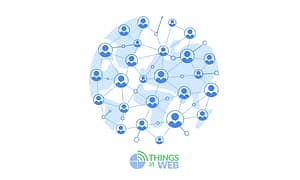
The onset of the novel coronavirus has tested all of our patience; it’s like we’re stuck in an eternal traffic jam with cars crawling and hitting the breaks every two minutes. Still, there’s no light at the end of the tunnel because the future itself is not visible. This atypical pandemic has posed us with various challenges, even the things that didn’t appear as obstacles before, like staying at home or using electronic devices for everything. The use of mobiles and laptops has melted into the nooks and crannies of our daily lives in everything we do, whether it be attending school or college or working from home. Working remotely was a concept that existed before, too, but now it’s more than a lifestyle; it is necessary. Many people had to jump into this habit abruptly. Many had to be acquainted with the way technology works from the start. But as mentioned before, it was and is a necessity since safety is the first and foremost concern.
Challenges
Back to challenges: since more devices were used, more issues were observed, which tested our tolerance and networking issues among these cons. Yes, it prevailed before, but now that you need it and most of your life depends on it, you notice it more and expect it to run smoothly. Network and application foundations have undergone considerable adjustments due to modern innovation and the growing use of facilitated administration. While these advancements have provided clients with more utility than at any other point in history, they have also significantly increased our reliance on a sophisticated network to assist us in ensuring the upkeep of these fundamental applications.
It might be even more devastating and difficult to resolve if a network problem arises. Understanding which network issues have the most significant impact on your network will help you quickly identify network issues. Networking issue side effects include no web connection, poor call quality, buffering, and lagging. If you’re unable to access the internet-based content you require, there’s a good chance your company is to blame. Broken equipment, such as switches, firewalls, and even unusual use designs, such as network transfer speed spikes, changes in application architecture, or security breaches, can cause network troubles. Internet gaming, websites, web-based media, and video calling are all affected by network difficulties. There is no need for the Internet to get involved. When a lousy connection prevents you from doing something other than using your computer, you’re dealing with a networking problem. Network troubles occur when something disrupts the connection between your PC and the content you’re trying to access.
Finding the root of a network problem is the first step toward resolving it. Network problems are caused by either a piece of the network you control or a portion of the network you don’t have control over. We will assume you’re in charge of your local network and nothing beyond that. If that isn’t the case, consider the neighborhood under your authority and the rest of the world to be under the control of someone else. Whether or not you control the network’s weak point determines how you approach the problem. Because you manage the web, you can handle nearby network issues without involving anyone else.
Outside network difficulties necessitate assistance from the network administrator. The most common issues are:
- Viruses.
Viruses can come from different places, including email connections, malicious programming, and web-based entertainment. While treating disease on a single PC can be difficult, removing a virus from a contaminated network is challenging. We’ll address this first problem because network viruses can altogether disable a PC network.
- Error in VPN
Your virtual private network (VPN) tries to establish a secure connection between a local client and a remote server. When you can’t connect to a VPN, you’ll get an error notice that says something like “VPN blunder 800: Unable to set up the VPN association.” This can happen if the client device is disconnected from the local network, the network’s firewall is blocking VPN traffic, or the name or address specified for the VPN server is incorrect.
- Error in connection
The most vexing and perplexing network challenges are association concerns. If your computer has given you a “Restricted or no availability” error message, you can restart it.
- High bandwidth usage
Refers to a network’s ability to transfer data between devices or across the Internet in a specific amount of time. Bandwidth is frequently mistaken for Internet speed. However, it refers to the amount of data sent through a network in a particular amount of time, measured in megabits per second (Mbps). Higher bandwidth allows data to move more quickly across your network and simultaneously supports a greater number of connected devices. When someone or something on your web, such as an extensive application, consumes your bandwidth by downloading gigabytes of data, it causes a network blockage.
- IP address exhaustion
It appears that your network has gone down. You checked the network connector status and noticed that there wasn’t a single IP address. Your operating system has alerted you that the address was not obtained from the DHCP server. An example of an IP address is 192.168.1.2. It’s possible that the DHCP server is out of lessons, that the device is set to use a static address rather than a DHCP address, or that the DHCP request from the device never reaches the server.
In conclusion, network problems are confounding, and if left unchecked, they can have disastrous consequences for your company’s network. That is why it is vital to understand what can go wrong with your network and continuously monitor network execution to quickly identify and fix network issues before they affect your end clients.
Common networking issues and how to solve them
When working on a network, it can be confusing to identify network issues and then determine which one needs a solution. A slow network does not mean that your desktop is inefficient; it could be a performance issue. If your network is slow, it means that your device or application is hogging the bandwidth. In this case, you will need to analyze the problem further. Here are some of the most common networking issues:.






